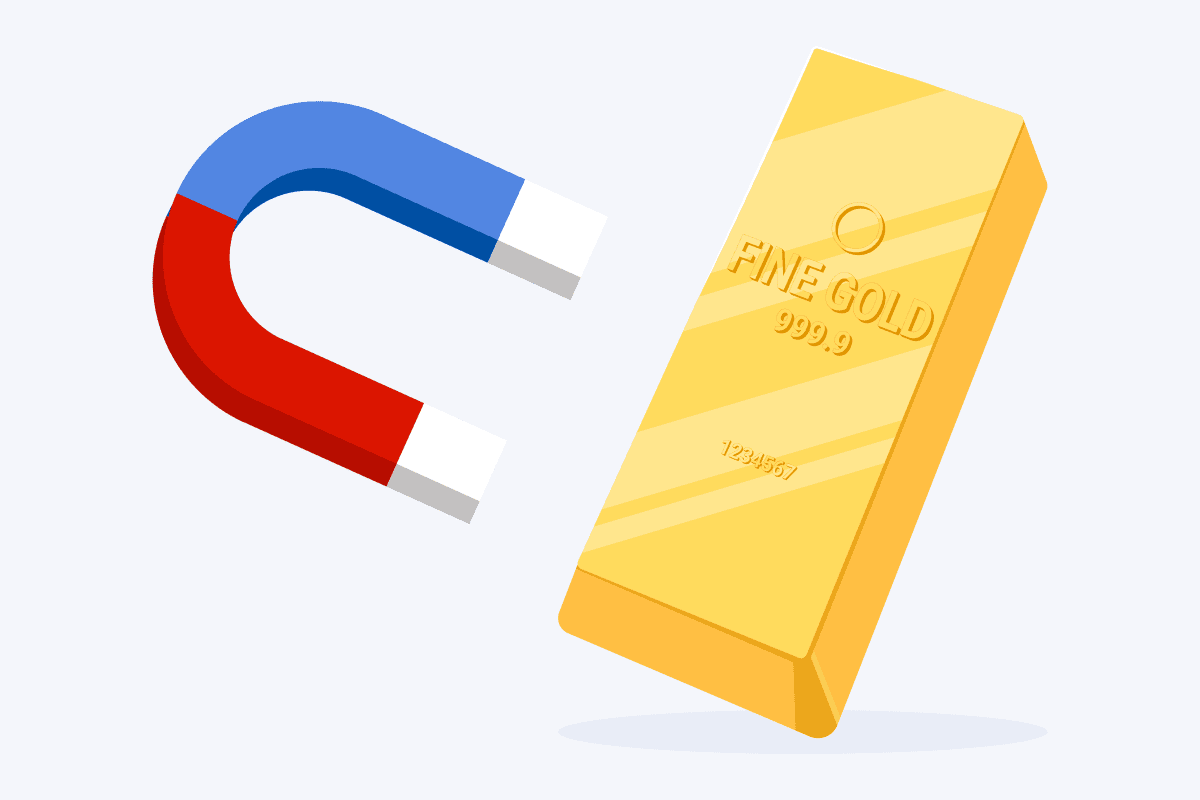How to Test Gold at Home with a Magnet: Spot Fake Gold Fast
Discover how to test gold at home with a magnet and this method’s drawbacks.
By Jane Pardo | Updated January 4, 2024
Does a magnet stick to gold? No, because gold, in its pure form, is not magnetic. In contrast, fake gold typically contains metal components that get drawn to magnets.
Table of Contents
DIY magnet test to check if your gold is real
First, prepare a neodymium magnet. Confirm that it works by testing it with metallic objects, such as paper clips and nails. Next, clean your gold item. Ensure there is no dirt, debris, or grime for accurate results. Place your gold on a wooden surface. Slowly bring the magnet close to your gold without direct contact. Real gold is not attracted to magnets.
If the magnet pulls toward the gold, you possibly have a counterfeit gold item.
Neodymium magnets have a powerful field strength, making them the best magnet to test gold. They come in convenient key chain designs if you want something portable.
Neodymium magnet
The magnet should be equivalent to the size of your gold or preferably larger than the gold item. A small neodymium magnet will not be strong enough to create a magnetic reaction with heavier gold items, like heavy gold bullion.
Remember not to use average refrigerator magnets, which are not strong enough to detect magnetic metal contents in gold alloys.
Magnets attract gold-plated items
Magnet testing help determine if an item is gold-plated or not.
Gold-plated items have a thin gold coating and a base metal. Pure gold without alloys is soft and malleable. The metal addition, usually magnetic, provides strength and durability to gold-plated jewelry. The gold overlay creates a shiny, attractive appearance.
However, gold plating is also typical for counterfeit gold pieces, such as gold coins. These imitation pieces are only gold outside but made with metal inside, so they will likely fail the magnet test.
Limitations of testing gold with a magnet
Gold items not attracted to a magnet are not always guaranteed authentic. Fake gold sometimes consists of non-magnetic metals, such as copper and brass, that are not attracted to magnets.
Additionally, some gold alloys contain traces of magnetic metals, usually nickel and iron, that could make them magnetic and test as fake. These gold alloys have authentic gold, although less pure.
Also, some gold jewelry items are made with real gold but combined with magnetic strength pieces, such as metal clasps, bracelet wires, or metal springs. These magnetic components can be drawn to a magnet, causing misleading results.
Read our guide on how to test gold to learn our most recommended methods.
FAQs about testing gold at home using a magnet
Is white gold magnetic?
White gold can be magnetic depending on its components. It is generally an alloy of around 75% gold and 25% zinc and nickel. It may also contain other metals, such as copper and palladium.
Does 14k gold stick to a magnet?
10k, 14k, and 18k gold can stick to a magnet. Karat levels lower than 24k means the gold is not pure. Gold alloys contain metal materials that make them drawn to magnets.
Does 24k gold get attracted to a magnet?
The highest karat level for gold is 24k, which means an item is 100% pure gold. Therefore, 24k gold is not magnetic.
Which magnetic metals are common in counterfeit gold?
Nickel, iron, and cobalt are magnetic metals commonly used in fake gold. They have a similar density to gold, making them suitable for counterfeiting gold. They sometimes have thin authentic gold plating for a more convincing appearance.
Written by Jane Pardo

Jane Pardo is our senior gold & silver expert. Jane lends insight into precious metals investing, collecting, testing, and maintenance.
Trending posts under
As participant in an affiliate advertising program, we earn from qualifying purchases.